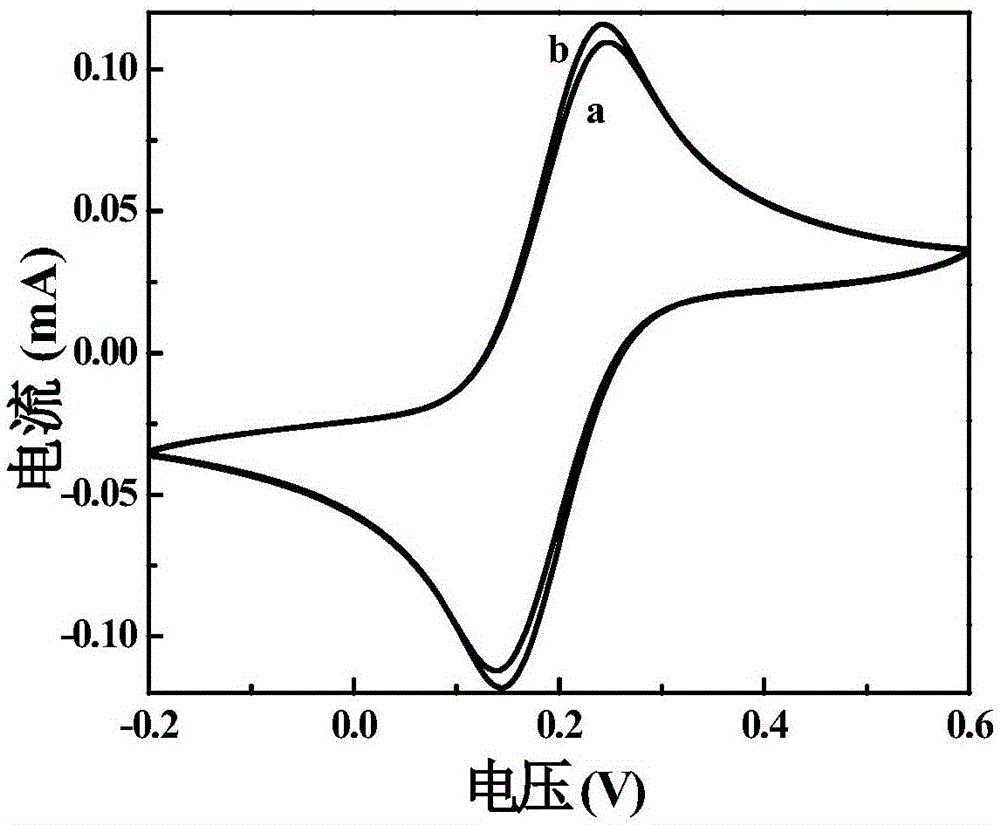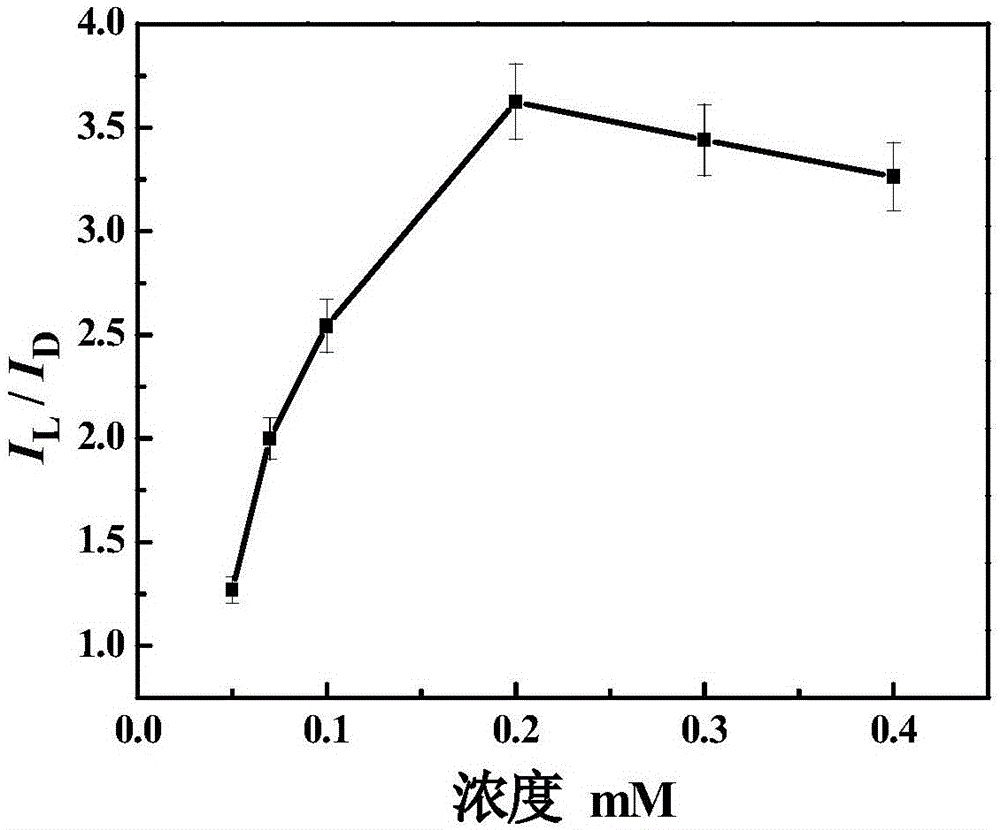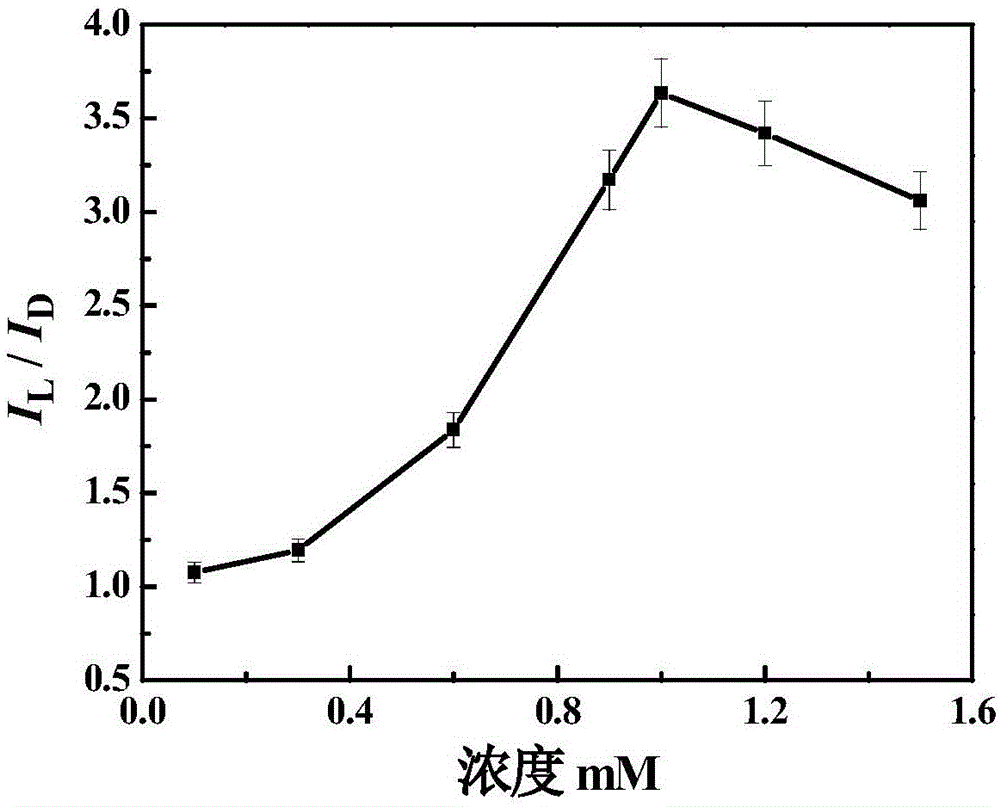Chitosan-modified glassy carbon electrode-based selective recognition of tryptophan enantiomer containing zinc ion
A technology of tryptophan enantiomers and glassy carbon electrodes, which is applied in the field of electrochemical sensors and molecular recognition, can solve problems such as differences in biological activity, and achieve the effects of simple operation, short time, and easy preparation
- Summary
- Abstract
- Description
- Claims
- Application Information
AI Technical Summary
Problems solved by technology
Method used
Image
Examples
Embodiment 1
[0025] (1) Prepare a CS solution (the solvent is 0.1M HCl, pH=1.0), and deposit it on the surface of the glassy carbon electrode with a constant potential, the deposition voltage is -0.5V, and the deposition time is 375s to obtain a non-alkaline treated CS / GCE modified electrode ; The electrode was placed in an alcoholic ammonia solution for alkali treatment for 15 minutes, then rinsed with a small amount of ethanol, and placed in air to dry to obtain an alkali-treated CS / GCE modified electrode.
[0026] (2) The electrode prepared in step 1 was placed in a potassium ferricyanide solution and characterized by cyclic voltammetry. The potential range was -0.2-0.6V, and the scan rate was 0.1V / s.
Embodiment 2
[0028] In order to investigate the differences in the recognition ability of tryptophan enantiomers with different zinc ion concentrations. Therefore, the concentrations of zinc ions were respectively 0.05mM, 0.07mM, 0.1mM, 0.2mM, 0.3mM and 0.4mM to identify tryptophan enantiomers. The results are shown in figure 2 , it can be seen that when the concentration of zinc ions is 0.2mM, the recognition ability is the best. Zn 2+ As a coordinated metal ion in this ternary mixed system, with Zn 2+ As the concentration in L / D-Trp solution increases, more Zn(II) will participate in coordination with CS and L / D-Trp in the solution, and the recognition effect will be significantly improved. When Zn 2+ The best recognition effect was achieved when the concentration of the concentration increased to 0.20mM. But with Zn 2+ As the concentration continues to increase, the interaction between cations increases, which in turn inhibits the Zn complexation reaction. 2+ Activity, which redu...
Embodiment 3
[0030] In order to investigate the differences in the ability of chitosan modified electrodes to recognize different concentrations of tryptophan enantiomers. Therefore, the concentrations of tryptophan were respectively 0.1 mM, 0.3 mM, 0.6 mM, 0.8 mM, 1.0 mM, 1.2 mM and 1.5 mM. See the result image 3 , it can be seen that when the concentration of zinc ions is 1.0mM, the recognition ability is the best.
PUM
 Login to View More
Login to View More Abstract
Description
Claims
Application Information
 Login to View More
Login to View More - R&D
- Intellectual Property
- Life Sciences
- Materials
- Tech Scout
- Unparalleled Data Quality
- Higher Quality Content
- 60% Fewer Hallucinations
Browse by: Latest US Patents, China's latest patents, Technical Efficacy Thesaurus, Application Domain, Technology Topic, Popular Technical Reports.
© 2025 PatSnap. All rights reserved.Legal|Privacy policy|Modern Slavery Act Transparency Statement|Sitemap|About US| Contact US: help@patsnap.com



